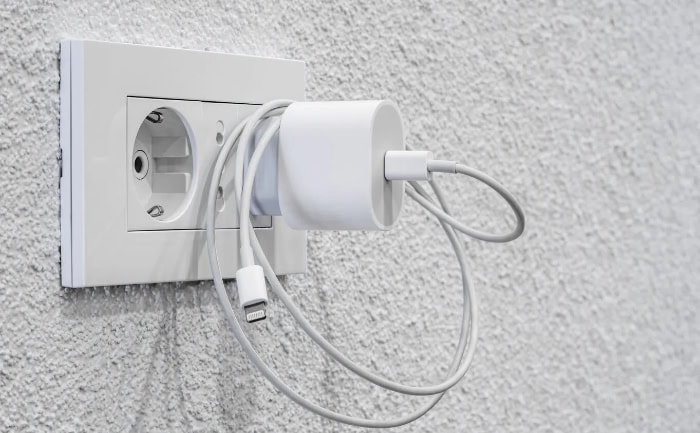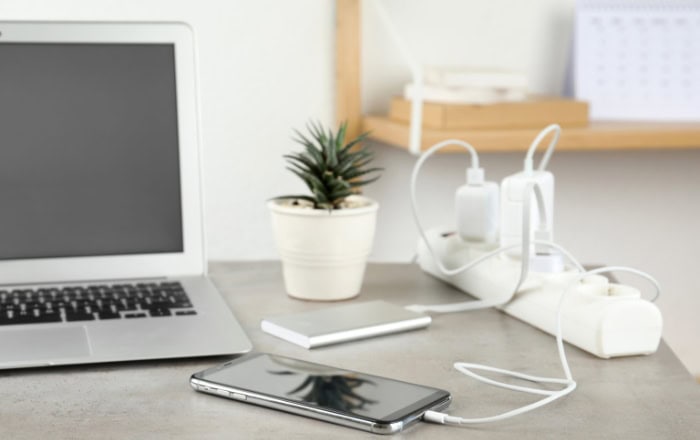Chargers Keep Breaking? Avoid These Common Mistakes

Frustrated by constantly replacing broken phone chargers? You're not alone. Chargers are essential accessories we rely on daily, yet they seem to fail far too often. Dealing with frayed cables, bent connectors, and inconsistent charging is not only annoying but also costly over time.
However, many people are unaware of the common reasons behind charger breakage and how to prevent it. By understanding the causes and implementing simple solutions, you can significantly extend the lifespan of your chargers and save money in the long run.
The Culprits Behind Charger Breakdowns
Phone and device chargers are prone to various issues that can lead to their untimely demise. While some causes are due to user habits, others stem from the charger's design and construction.
Let's take a closer look at the most common reasons your chargers may be failing prematurely.
Mishandling and Improper Storage
One of the most prevalent causes of charger breakage is incorrect handling and storage. Many people tend to wrap their charging cables tightly or in ways that put undue stress on the connectors.
Over time, this repeated strain can cause the wires to fray or the connectors to weaken, leading to charging issues. Additionally, yanking, bending, or twisting the cable when unplugging it from your device can also contribute to damage and reduce the charger's lifespan.
Subpar Materials and Build Quality
Another factor that significantly impacts charger durability is the quality of materials and construction. Cheap, non-certified, or counterfeit chargers often use lower-grade components that are more susceptible to wear and tear.
These chargers may feature thin, non-reinforced cables that are prone to fraying and splitting, or poorly designed connectors that can easily bend or break. Investing in high-quality, certified chargers from reputable brands can help mitigate this issue.
Inevitable Wear and Tear
Despite taking all the necessary precautions, chargers are still subject to normal wear and tear from frequent use over time. The constant plugging and unplugging, as well as the stress placed on the cable during regular use, can gradually degrade the charger's components.
While this wear and tear is inevitable, proper handling and storage can significantly extend the life of your charger.
Recognizing the Red Flags of a Failing Charger
Knowing the signs of a failing or broken charger can help you address the issue before it leads to complete charger failure or potential damage to your device. By keeping an eye out for these warning signs, you can proactively replace your charger and avoid the frustration of a dead battery when you need your device the most.
Visible Wear and Tear
One of the most obvious signs of a charger on its last legs is visible damage to the cable or connectors. Over time, the constant bending and flexing of the cable can cause the protective shielding to fray or split, exposing the delicate wires inside.
This exposure not only makes the charger more susceptible to further damage but also poses a potential safety hazard. Similarly, bent or missing connector pins can prevent the charger from making a proper connection with your device, leading to charging issues.
Inconsistent Charging Performance
Another telltale sign of a failing charger is intermittent charging or a charger that only works when the cable is positioned at certain angles. If you find yourself having to wiggle or adjust the cable to get your device to start charging, it's a clear indication that the charger's connectors or wires are damaged.
This inconsistent charging performance can be frustrating and may eventually lead to a complete lack of charging capability.
Slow or No Charging
If your device is charging significantly slower than usual or not charging at all, even when using different cables or outlets, it's a strong indication that your charger may be the culprit. As chargers age and endure wear and tear, their ability to deliver the proper amount of power to your device can diminish.
If you've ruled out other potential issues, such as a damaged charging port or software problems, it's likely time to replace your charger.
Abnormal Heat Generation
A charger that gets abnormally hot during use is another warning sign that should not be ignored. While it's normal for chargers to generate some heat during the charging process, excessive heat can indicate a problem with the charger's components or circuitry.
An overheating charger not only poses a safety risk but can also damage your device's battery or internal components. If you notice your charger becoming uncomfortably warm to the touch, discontinue use immediately and replace it with a new, high-quality charger.
Simple Solutions for Charger Issues

Before rushing out to buy a new charger at the first sign of trouble, it's worth trying some simple troubleshooting steps and quick fixes. These easy-to-perform actions can often resolve common charging issues and save you the expense of purchasing a replacement charger unnecessarily.
Verify the Power Source
One of the first things to check when encountering charging problems is the power outlet itself. Ensure that the outlet is functioning correctly by plugging in another device or charger.
If the issue persists, try using a different outlet to rule out any problems with the original power source. This simple step can help you determine whether the charger is truly at fault or if there's an issue with the electrical outlet.
Assess Cable Damage
If you've determined that the outlet is not the problem, carefully inspect the charging cable for any visible damage. Look for frayed or split cable shielding, exposed wires, or bent connectors.
If you notice any minor fraying, you can temporarily repair the cable using electrical tape to prevent further damage. However, keep in mind that this is only a short-term solution, and it's best to replace the charger as soon as possible to ensure safe and reliable charging.
Remove Debris from the Charging Port
Accumulated debris in your device's charging port can prevent the charger from making a proper connection, leading to charging issues. To address this problem, gently clean out the charging port using compressed air or a toothpick.
Be careful not to damage the delicate components inside the port while removing any lint, dust, or debris. Once the port is clean, try plugging in the charger again to see if the issue has been resolved.
Restart Your Device
Sometimes, charging issues can arise due to software glitches or temporary problems with the device's charging circuitry. In these cases, a simple restart of your device can often resolve the issue.
Restarting your phone or tablet clears any temporary software or connection problems and allows the charging port to reset. After restarting your device, plug in the charger again and check if the charging process resumes normally.
Extending Your Charger's Life
While it's impossible to make your chargers last forever, there are several best practices you can adopt to significantly prolong their lifespan. By treating your chargers with care and following these simple tips, you can minimize the risk of damage and ensure that your chargers continue to function optimally for as long as possible.
Handle with Care
One of the most effective ways to extend your charger's life is to be gentle when plugging and unplugging it from your device. Always grasp the connector firmly, rather than pulling on the cable, when disconnecting the charger.
Avoid yanking, bending, or twisting the cable, as these motions can put undue stress on the wires and connectors, leading to damage over time. By treating your charger with care and avoiding rough handling, you can minimize the risk of physical damage and ensure a more reliable charging experience.
Proper Cable Management
In addition to handling your chargers gently, it's crucial to store and wrap your charging cables properly when not in use. Instead of tightly winding the cable around the charger or folding it in a way that stresses the ends, opt for a loose wrap that allows the cable to maintain its natural shape.
You can use twist ties, velcro straps, or a dedicated cable spool to keep your cables organized and tangle-free. Proper cable management not only extends the life of your chargers but also makes them more convenient to use and transport.
Reinforce Vulnerable Areas
Even with careful handling and storage, certain areas of your charging cable, such as the connector joints, are more susceptible to wear and tear. To provide extra protection for these weak points, consider using cable protectors or springs.
These accessories are designed to absorb stress and prevent the cable from bending at sharp angles, reducing the risk of damage. By reinforcing vulnerable areas, you can significantly extend the lifespan of your chargers and minimize the need for replacements.
Choose Quality and Certification
When it comes to purchasing new chargers, it pays to invest in high-quality, certified products from reputable brands. While it may be tempting to opt for cheaper, generic chargers, these products often use inferior materials and lack the necessary safety certifications.
Certified chargers from trusted manufacturers undergo rigorous testing to ensure they meet strict safety and performance standards. By choosing quality chargers, you not only benefit from improved durability and reliability but also protect your valuable devices from potential damage caused by subpar accessories.
Conclusion
Charger breakage and failure can be frustrating and costly, but by understanding the common causes and implementing simple preventive measures, you can significantly extend the life of your chargers. Improper handling, low-quality materials, debris buildup, and normal wear and tear are the primary culprits behind most charger issues.
By practicing gentle handling techniques, properly storing your cables, and investing in high-quality, certified chargers, you can minimize the risk of damage and ensure reliable charging performance. If you do encounter problems with your charger, remember to troubleshoot by checking the outlet, inspecting the cable for damage, cleaning the charging port, and restarting your device before assuming the charger itself is faulty.
By taking these proactive steps and treating your chargers with care, you can save money, reduce electronic waste, and enjoy the convenience of dependable charging accessories for your essential devices.


